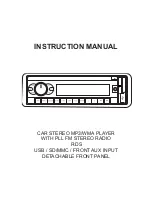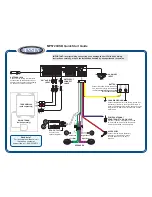
Spatial FOG Reference Manual
Page 36 of 144
Version 2.3
03/05/2018
9.4
Power Supply
A high level of power supply filtering has been built into Spatial FOG to allow for
reliable operation in demanding environments. Spatial FOG contains a fully isolated
power supply and has separate grounds for power and signal to ensure that power
supply noise does not corrupt communications or cause ground loops with other
equipment. When wiring the system, the signal ground should be routed with the
primary RS232, auxiliary RS232, GNSS RS232 and GPIO pins. The power ground should
be routed with the power supply to the power source.
A power supply should be selected that can provide at least the maximum current
calculated from the graph in Illustration 11.
Spatial FOG contains an active protection circuit on the power supply input that
protects the unit from under-voltage, over-voltage and reverse polarity events. The
protection circuit shuts of power and automatically recovers the unit to full operation
once the fault is removed. Take care when running the unit close to its under-voltage
lockout of 9 V because small voltage drops can engage the under-voltage shutdown
and potentially oscillate between the on and of state. It is recommended that the unit
is always run at 10 V or more to avoid issues associated with this.
9.5
GNSS Antenna
The GNSS antenna should be installed level with a clear unobstructed view of the sky
and close to the Spatial FOG unit where possible. The antenna should be mounted
away from any RF emitters. It is important to have a ground plane (fat conductive
surface such as a piece of plate aluminium) under the antenna with a minimum radius
of 60mm.
The GNSS antenna position ofset should be configured in the Spatial FOG unit by
using the alignment configuration dialogue in Spatial FOG Manager, see section
11.8.4. The antenna ofset is measured from the centre of the Spatial FOG unit to the
central base (ARP) of the antenna in the body frame. It is very important to set the
antenna ofset accurately as Spatial FOG corrects for lever arm velocities. Incorrect
GNSS antenna ofset will lead to performance degradation under turning and angular
rotations. The antenna ofset is measured from the centre of the Spatial unit to the
centre of the antenna in the body frame (X forward, Z down). Please note that as Z is
positive down, mounting the antenna above the Spatial unit will result in a negative Z
ofset.
An example installation with axes marked is shown below in Illustration 17 and
Illustration 18. In this installation there would be a positive X antenna ofset value, a
positive Y antenna ofset value and a negative Z ofset value.
















































